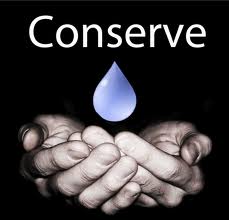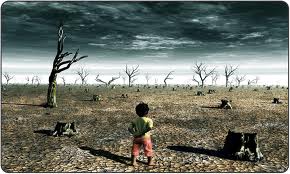Since time immemorial, man has been dependent on water for most major aspects of his life. If we take a peek into history to an era about five-six thousand years into our past, we can see that all major civilizations that developed in a manner that was worthy of mention, did so on the banks of, or at least fairly close to some major river of that area. Evidence of such developments has been well documented throughout history, notable examples being the Indus valley civilization on the river Indus, the Mesopotamian civilization on the Euphrates-Tigris, etc. Even in fictional works, writers have always evolved civilizations on the banks of rivers, attaching untold importance to these cradles of civilizations. For example, the fabled city of Devagiri in the Shiva trilogy on the mythical Saraswati, Ayodhya on the Sarayu, and the list goes on.
It is thus a hard fact to digest that the world’s fresh water sources are fast becoming non-existent. It is a well-known fact that only 3% of the total water available on Earth is fresh water. It is this meagre amount that has been recycled through the water cycle again and again to provide water for most of man’s requirements.
However, since the amount is meagre, it will not take long for it to be contaminated in its entirety, leading to a day when, due to paucity of water, it could actually become unaffordable.
The solution to this kind of a problem must come from all of us, the inhabitants of this planet who would be directly affected by such a calamity. There is no magical solution to such problems. But there are corrective measures, which if implemented in a timely fashion, might just ensure that humans do not lack for water, at least until some kind of an alternate is dreamt up.
On a major scale, methods such as rain water harvesting can be implemented. It is actually enforced by law in some states, but has to be implemented with aplomb if any improvement is to be seen in the water table. In this method, almost all the rain that falls on a building is redirected through a system of pipes, to find its way to a storage space, usually underground so that this water can serve as a supplement to that drawn from the Earth. Another method which can be implemented on a wide scale is that of drip irrigation. This method can be used to great effect by farmers. Here, plants receive water in a highly localized manner. Water is allowed to drip directly onto the roots of the plant or near the base of the plant, from where it percolates into the soil on to the roots. Since this spends water only in drops, this is a very effective means of conserving water, trumping conventional methods by a considerable margin.
At the household level, water can be saved by methods that one would not have imagined till it is pointed out, but seems obvious once enlightened about it. Nozzles can be used, attached to the normal taps, so that the water flow is restricted when it comes out of the tap. Sprinklers can be used for watering plants instead of the regular hose pipes. Volume of water that comes out of sprinklers is drastically reduced, when compared to hose pipes. The next tip is clichéd, and if you have seen it once, you have seen it a hundred times: close the water taps properly so that water does not leak unnecessarily. It has been found that over one litre of water can be saved per day if all the taps are closed in an average household. It does not need a genius to figure out how much would be saved if taps were closed properly world over. The next tip is not exactly household, but more oriented towards businessmen. Toilets can be better designed so that water that is used while flushing is optimized. It is obvious that a lot of water goes waste while flushing. If this is reduced, water saved per person will increase radically. If more water is required after a single flush, one can always flush again. Finally, each of us can try to incorporate the latest laundry trend in our households as well – steam washing. Steam washing is a viable substitute to water washing and has been proven to be just as efficient, if not more that washing with water. Since hot steam is used, another advantage is that the clothes are wrinkle free. If each of these methods is implemented, it is easy to see that though the problem of water scarcity may never be solved completely, it can be put off again and again until we learn to survive without the Earth’s natural supply.
The most common thought in one’s mind is ‘What difference can one person make?’ Well, my reply is to ask him to think not as a person, but as a household, as a street, a district, a city, and in progressively higher denominations, until he sees himself making a difference. Little drops make an ocean. The time for following a leader is past. One has to take the mantle of leadership upon himself, for a revolution is what is required to save water now, else S.T.Coleridge’s words ‘Water, Water everywhere, not a drop to drink’ might become uncomfortably close to becoming reality.
Prevent this.
Save water. Save Humanity.


Leave a Reply